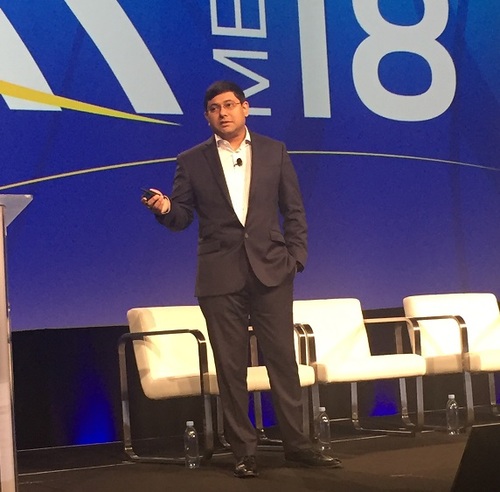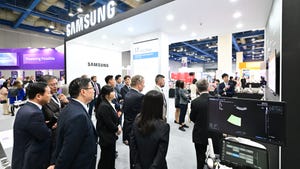Spectrum, Telus Team on Dynamic Services PoC
MEF18 demo shows policy-driven dynamic services over multi-carrier networks.
October 31, 2018

LOS ANGELES -- MEF18 -- Spectrum Enterprise today demonstrated a next-gen policy-driven networking proof-of-concept that enables dynamic application-aware services across multi-carrier networks.
The demo uses a MEF 3.0 Lifecycle Services Organization applications programming interface called Interlude that defines an approach to orchestrating service changes across multiple service provider networks, in this case the Spectrum Enterprise and Telus Corp. (NYSE: TU; Toronto: T) networks. The PoC is part of the MEF18 PoC Showcase and shows real-time changes can be triggered by policy to adapt networks to application needs.
Figure 1:  Spectrum Enterprise's Satya Parimi: "You need to come up with innovative services that drive real value for the end customer."
Spectrum Enterprise's Satya Parimi: "You need to come up with innovative services that drive real value for the end customer."
As Satya Parimi, group vice president, data products for Spectrum Enterprise, said in a Tuesday keynote, it's essential for service providers to use newer technologies like SDN and NFV to create new services that have demonstrable value and not just new versions of the existing set of services. Using policy-driven dynamic services and moving eventually to intent-based networking is one such opportunity.
"It is up to service providers, but to get truly big uptake and movement of these new dynamic services, we have to provide value and feature functionality, not just on price," he said. "There is a lot of value we can offer using a lot of SDN and NFV technology where we can pass on some of the savings to the customers, but they dry out. There is only so much we can cut from a cost perspective. You need to come up with innovative services that drive real value for the end customer."
The PoC demonstrates what Parimi calls "a simple example" of such a service, showing how service providers can automatically adapt their networks to offer more bandwidth in order to deliver a healthcare company's training video -- considered a bandwidth-consuming and performance-sensitive service -- across multiple service provider networks.
A trigger is set that says, for example, when video consumes 25% of available bandwidth, more bandwidth is automatically allocated for that time period, not just across one network, but end-to-end across all partner networks being used to deliver that service, Parimi explained. "You can change class of service, change prioritization or do both. You can set the policies any way you want."
The key thing is making that an automatic, policy-driven approach, that is proactive, not reactive, he added, because enterprises are definitely more interested in how their applications perform than they are in network configurations. Changes may not be strictly real-time, but will be near real-time, based on real-time monitoring of an application's performance across a hybrid (physical and virtual) network.
The PoC demo is using Spectrum and Telus as the network partners as well as Nokia Corp. (NYSE: NOK)/Nuage Networks' SD-WAN technology, Sandvine for application visibility and Singularity Networks for intelligence and client control.
Hone in on the opportunities and challenges facing European cable operators. Join Light Reading for the Cable Next-Gen Europe event in London on Nov. 6. All cable operators and other communications service providers get in free!
The Interlude API used in the demo is still in development by MEF but as the industry organization's CTO Pascal Menezes mentioned in his keynote, these kinds of PoCs and implementation projects are now routinely part of MEF's new, more agile development model.
Members can come in and stand up ideas and work with other members "and the results are fed into the iteration process that ultimately produces not paper specifications but software artifacts, including software development kits, that MEF exposes to developers earlier in its process, to reduce the specification cycle time from years to months," Menezes said.
Being able to quickly translate newer technologies into newer services is critical for service providers, Spectrum's Parimi stressed.
"We are showing incremental value to the client," he said. "And eventually, when you get to intent-based, it is going to see more compelling value and that is what is going to drive [more sales]. Having NFV everywhere, edge computing -- all of these infrastructure elements need to be in place, but the key is to show these up as services to the customers."
— Carol Wilson, Editor-at-Large, Light Reading
You May Also Like










